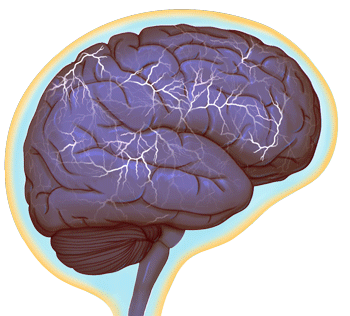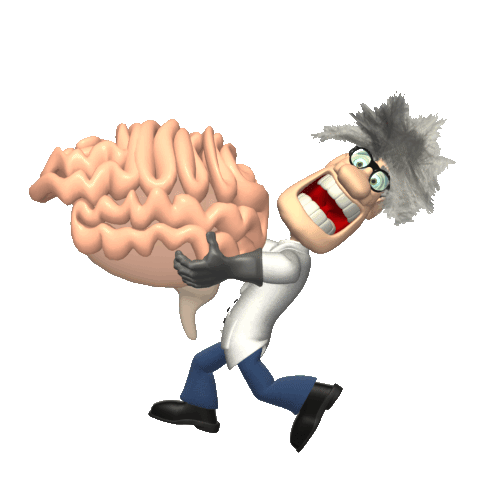How to Train Your Brain 🧠
🤔 To Remember Almost Anything
🤔 To Remember Almost Anything

Four techniques for storing knowledge
you might otherwise forget
Thomas Oppong - Oct 16, 2019
5 min read
Success is largely based on what you know - everything you know informs the choices you make. And those choices are either getting you closer to what you want or increasing the distance between you and your ultimate
goals in life.
Many people want to learn better and faster, retain more information, and be able to apply that knowledge at the right time.
But the reality is that we forget a lot of what we learn. Human forgetting follows a pattern. In fact, research shows
that within just one hour, if nothing is done with new information, most people will have forgotten about 50% of what they learned.
After 24 hours, this amount increases to 70%, and if a week passes without that information being used, up to 90% of it could be lost.
To improve knowledge acquisition and retention, new information must be consolidated and securely stored in long-term memory.

According to Elizabeth Bjork, PhD, a professor of cognitive psychology at UCLA who worked on a theory of forgetting
along with Piotr Wozniak, a Polish researcher best known for his work on SuperMemo (a learning system based on spaced repetition), long-term memory can be characterized by two components:Retrieval strength and Storage strength.
Retrieval strength measures how likely you are to recall something right now, or how close it is to the surface of your mind.
Storage strength measures how deeply the memory is rooted.
If we want our learning to stick, we have to do more than just aim to read a book every week or passively listen to an audio-book or podcast.
Instead, reread chapters you didn’t comprehend the first time, write down or practice what you learned the previous week before continuing to the next chapter or lesson, or take notes, if that works for you. If you are struggling to remember, refer to the information. By forcing yourself to remember past information, you’re cementing the new knowledge in your mind.
Research indicates that when a memory is first recorded in the brain - specifically in the hippocampus - it’s still “fragile” and easily forgotten.
Our brains are constantly recording information on a temporary basis to separate vital information from the clutter - scraps of conversations you hear on your way to work, things you see, what the person in front of you was wearing, discussions at work, etc. The brain dumps everything that doesn’t come up again in the recent future as soon as possible to make way for new information.
If you want to remember or use new information in the future, you have to deliberately work on storing it in your long-term memory.
This process is called encoding - imprinting information into the brain. Without proper encoding, there is nothing to store, and attempts to retrieve the memory later will fail.
In the late 19th century, Herman Ebbinghaus, a psychologist, was the first to systematically tackle the analysis of memory. His forgetting curve, which explains the decline of memory retention in time, contributed to the field of memory science by recording how the brain stores information.
Ebbinghaus once said, “With any considerable number of repetitions, a suitable distribution of them over a space of time is decidedly more advantageous than the massing of them at a single time.”
In a University of Waterloo report
that looks at how we forget, the authors argue that when you deliberately remember something you’ve learned or seen not long ago, you
send a big signal to your brain to hold onto that information. They explain, “When the same thing is repeated, your
brain says, ‘Oh - there it is again, I better keep that.’
When you are exposed to the same information repeatedly, it takes less and less time to ‘activate’ the information in your long-term memory and it becomes easier for you to retrieve the information when you need it.”
Most
lifelong learning will inevitably involve some reading and listening, but by using a variety of techniques to commit new knowledge to memory, you will cement new information quicker and better.
🧠
Spaced Repetition
One method is spaced repetition - repeating intake of what you are trying to retain over a period of time. For example, when you read a book and really enjoy it, instead of putting it away, reread it again after a month, then again after three months, then again after six months, and then again after a year. Spaced repetition leverages the spacing effect,
a memory phenomenon that describes how our brains learn better when we separate out information over time. Learning something new drives out old information if you don’t allow sufficient time for new neural connection to solidify.
🏫
The 50/50 Rule
Dedicate
50% of your time to learning anything new and the rest of your time to
sharing or explaining what you have learned to someone or your audience. Research shows
that explaining a concept to someone else is the best way to learn it
yourself. The 50/50 rule is a better way to learn, process, retain, and
remember information.
For
example, instead of completing a book, aim to read half, and try
recalling, sharing, or writing down the key ideas you have learned
before proceeding. Or better still, share that new knowledge with your
audience. You
could even apply the 50/50 rule to individual chapters instead of the
whole book. This learning method works really well if you aim to retain
most of what are learning. The ultimate test of your knowledge is your
capacity to transfer it to another person.
“The
best way to learn something truly is to teach it — not just because
explaining it helps you understand it, but also because retrieving it
helps you remember it,” says Adam Grant.
👀
Topic Demonstrations
Another
valuable method is to make the most of topic demonstrations to
understand a topic inside out. Unlike simply reading or listening to an
explanation, demonstrations show you how something works and help you
visualize the concept. When learning photography, design, public
speaking, negotiation, or a useful new technology, watching
instructional videos that demonstrate what you’re trying to learn can
improve your retention rate.
😴
Sleep
Finally,
use sleep as a powerful aid between learning sessions. Sleep after
learning is a critical part of the memory-creation process, and sleep
before learning strengthens your capacity.
Evidence
shows that short naps help reinforce learned material. The authors explain, “We suggest that the mere onset of sleep may initiate active
processes of consolidation which - once triggered - remain effective even if sleep is terminated shortly after.” The results show that even a period of sleep is enough to help you remember what you’ve learned. Longer naps (60-plus minutes) are also great for storing new information into our permanent memory. A good night’s sleep is even better for memory recall and clear
💁Stop Multitasking.
While you may feel like you are accomplishing more by multitasking, you are actually more likely to make mistakes and get frustrated when things go wrong. By not multitasking, you can train your brain to focus your attention on one activity at a time and do better work. Break up tasks into smaller blocks of time so that you can dedicate that time solely to what you need to accomplish.
While you may feel like you are accomplishing more by multitasking, you are actually more likely to make mistakes and get frustrated when things go wrong. By not multitasking, you can train your brain to focus your attention on one activity at a time and do better work. Break up tasks into smaller blocks of time so that you can dedicate that time solely to what you need to accomplish.
🎾
Exercise Daily.
Exercising as little as 25 minutes a day can increase your brain function. Exercise helps you learn faster and retain information better. Make exercise a part of your daily routine to ensure you get the brain boost from your physical activity.
Exercising as little as 25 minutes a day can increase your brain function. Exercise helps you learn faster and retain information better. Make exercise a part of your daily routine to ensure you get the brain boost from your physical activity.

The
more the mind is used, the more robust memory can become. Taking
control of information storage will not only help you retain new bits of
information but also reinforce and refine the knowledge you already
have.

No comments:
Post a Comment